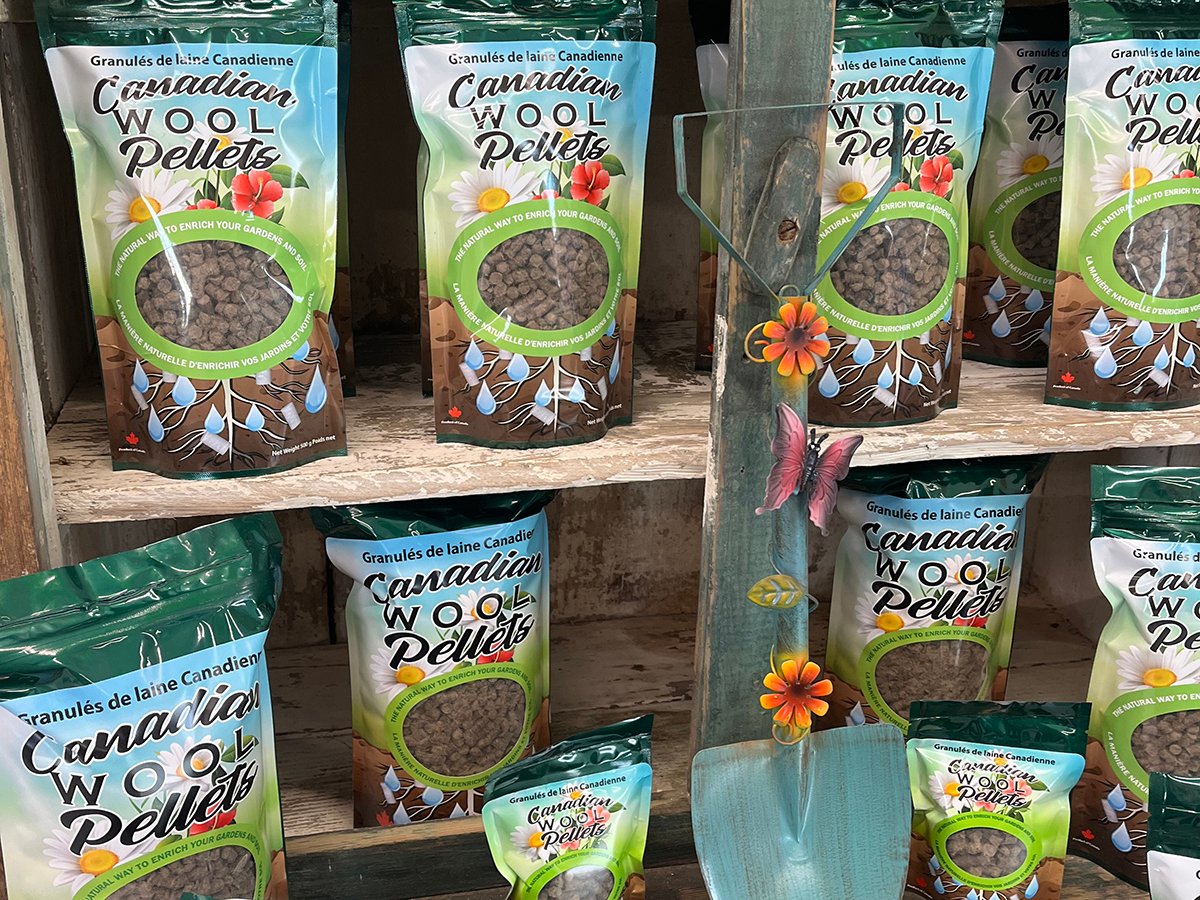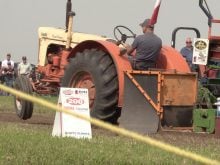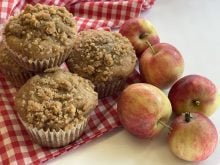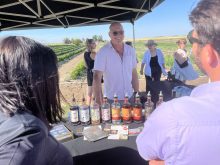CARON, Sask. — When the barn contains more wool than sheep, it’s time to do something about it, said Helen Verstegen.
She and her family found themselves in that situation after shearing 1,200 ewes on their farm south of Caron. During the COVID-19 pandemic, wool exports to China trailed off and it wasn’t moving to market.
Verstegen said she started to do some research into what she could do with her many bags of wool and found wool pellets were common in the United Kingdom.
Read Also
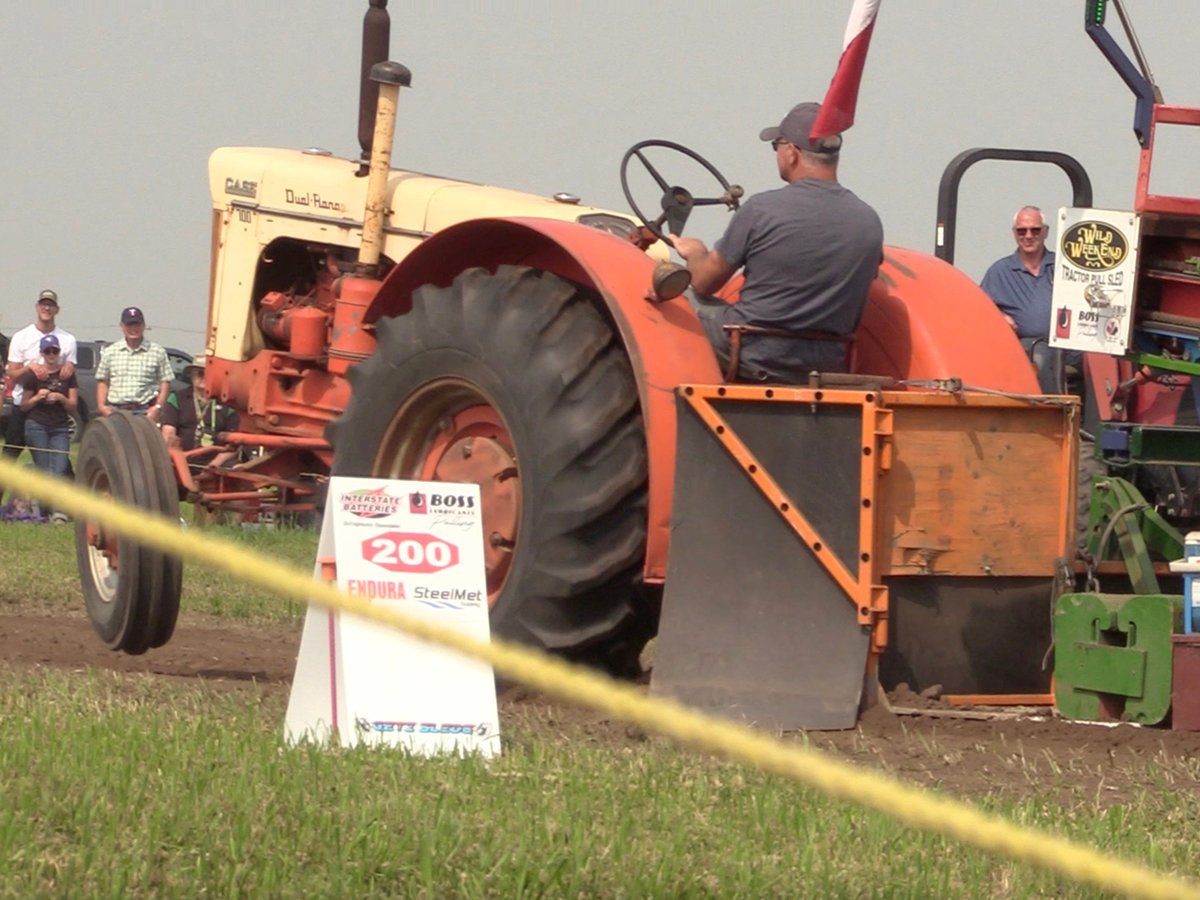
Vintage power on display at Saskatchewan tractor pull
At the Ag in Motion farm show held earlier this year near Langham, Sask., a vintage tractor pull event drew pretty significant crowds of show goers, who were mostly farmers.
“I just started doing my homework, and I searched everything about wool pellets. And I said, ‘hey, we can do that and I can use those wool pellets for our own flowers, our flower beds, for all of our vegetable gardens,’ ” she said.
That was the beginning of Canadian Wool Pellets, which is located just down the road and next door to the Canadian Fibre Mill owned by her brother, Howard, and Karen Smith.
The wool that Verstegen is working with is not used for processing at a mill like what the Smiths have. She describes it more as waste wool.
Wool is considered a natural soil amendment that helps aerate, fertilize and encourage water retention. As a natural product, it appeals to many gardeners, and Verstegen said it’s also recycling a product that otherwise could be just sitting in barns.
Her research extended to the appropriate pelleting machine, which she ordered from the United States and took about eight months to arrive.
“They were having to make them, and I was on a list,” Verstegen said, adding there was a backlog of parts.
It finally arrived in December 2023. She spent a few months figuring it out and getting through some hiccups before beginning to make pellets she could put into her garden in spring.
“Then all of a sudden, another light bulb goes off and I’m like, ‘hey, if we use it, why can’t other people use it?’ ” she said.
They began talking to Saskatchewan greenhouses to see if they’d be interested, and they were. They attended trade shows and sold direct to the public.
“Then that other light bulb goes off, and I’m like, ‘well, why can’t we go bigger than this?’ So now we’re in Canadian Tire and UFA and I have two other major retailers that we’re looking at right now,” Verstegen said.
She is working with an Ontario distributor to start offering pellets there. Demand is strong as people realize that 100 per cent natural sheep wool pellets are an amazing product, especially in drier areas, she said.
“Wool retains 20 per cent of its weight in moisture, so basically when that wool gets wet and expands, it gives that aeration to your root system and those roots just go deeper and they’re happier,” Verstegen said.
In the United States, pellets are being used on a wider scale than gardens and houseplants. Numerous farmers have called Verstegen and asked if the pellets are something they could use, but her operation isn’t big enough yet to supply that type of demand.
The company was recently named new business of the year by the Moose Jaw Chamber of Commerce and aside from that honour, Verstegen said it’s exciting that they are able to operate the business as a family. Everyone, including the grandchildren, can find something to do with bags of wool.




